Gouda, most famous for the namesake cheese, is another one of the pretty small cities of the Netherlands, and we'll have a quick look in this brief practical guide, seeing the highlights of town in a visit that only takes a few hours. Gouda's array of historic churches and other buildings makes it a very popular day trip destination.
Our walking route starts at the train station, then down a busy shopping street, Kleiweg, to the central market square, into the big church, continues along a beautiful canal down to the harbor, then circles back around in a complete round-trip walking tour of the city, ending up back at the train station.
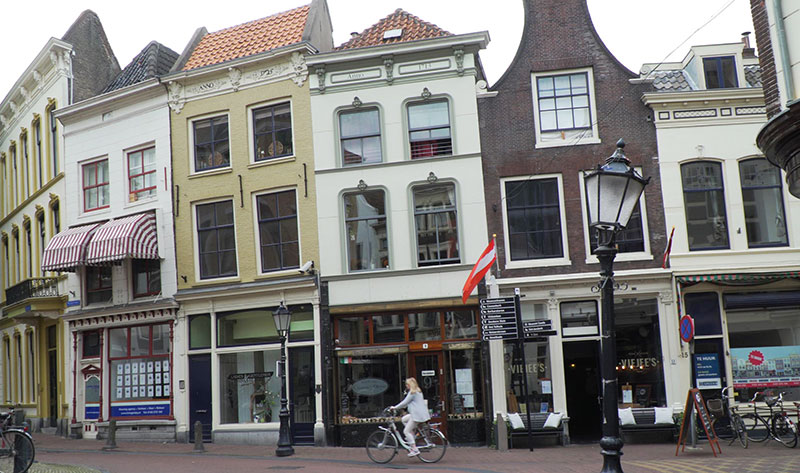
The compact historic center has fine examples of that special Dutch landmark of reflecting canals lined by flowers and pedestrian lanes. We’ll visit several of those charming neighborhoods and the main town square, featuring the City Hall and the important commercial building where the cheese was weighed on the main town square.
You might pronounce the city "Gooda" as in their Gouda cheese, but the Dutch say it differently with a guttural G sound, a growling exhale like they are clearing their throat "(G)chgouda."
MAIN SQUARE
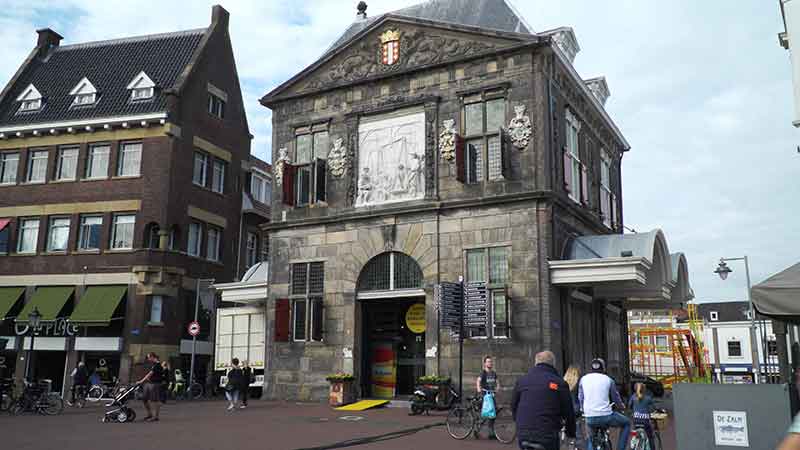
The Weighing House, or Waag, has for centuries been a central point in town where the all-important cheese was weighed to levy taxes, and deals were made. It now is a national monument, and contains the Tourist Information Center and the Cheese and Crafts Museum where you can taste and purchase a variety of cheeses.
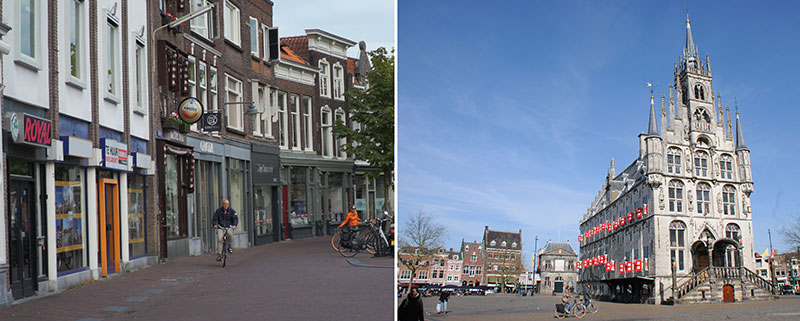
The Markt, or marketplace, is the central plaza in the heart of town, home to countless pubs, restaurants and cozy sidewalk cafes.
The exquisitely proportioned Stadhuys, or City Hall, is a gem of late Gothic and early Renaissance architecture, dating from 1449-59. During the summer of 1438, a devastating fire reduced the town of Gouda virtually to ashes. The town hall suffered heavy damage. The town council decided that the new town hall should be freestanding. It chose a new location on the market field, which was little more than a sodden peat bog at the time.
Built between 1448 and 1450, is one of the oldest Gothic city halls in the Netherlands. If the doors of the old Town Hall are open, you can visit the splendid wedding hall, the mayor's office and council chamber . On the right facing wall you can see the carillon with mechanical puppets which were added in 1961.
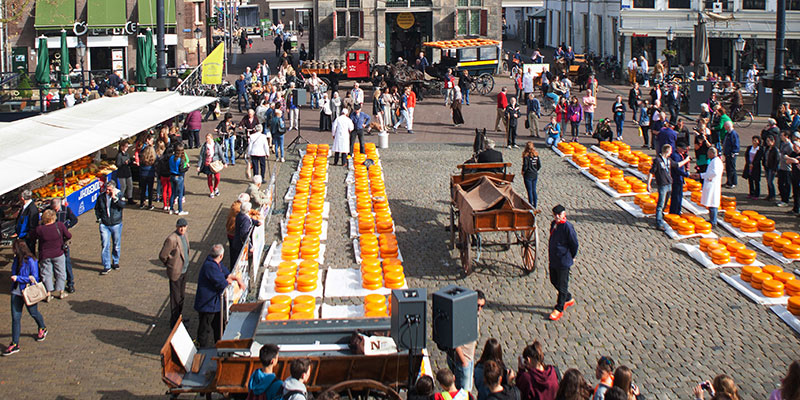
The traditional cheese market takes place in the plaza every Thursday mornings 10 AM till 1230 from April through the end of August. The Gouda Cheese Market is a spectacular historic and nostalgic scene. If you would like to visit the cheese market, make sure you are on time. In good weather, the event at the Markt attracts many visitors.
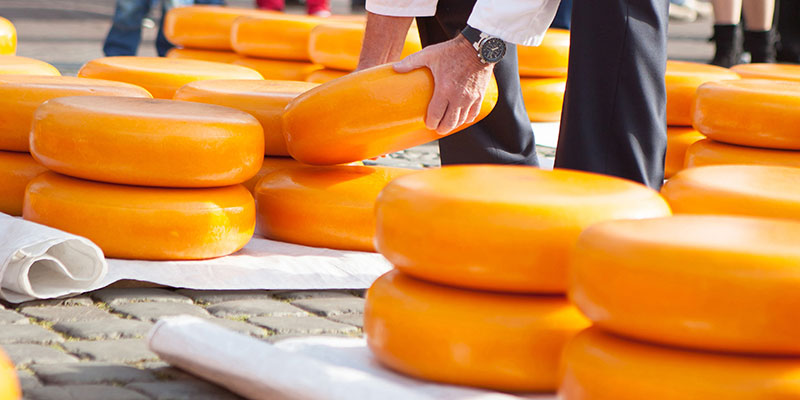
Besides the cheese trade and making of cheese, there is also a crafts market. The world-famous Gouda cheese is not made in the city itself but in the surrounding region. It derives its name from being traded in Gouda where the city council imposes stringent quality controls.
Wonderful gouda farmhouse cheese!
't Kaaswinkeltje is an authentic and unique shop in the heart of Gouda's historic town centre that has been specialised in farmhouse cheese for generations.
The cheese is still made in the traditional way on the farms around Gouda. The cheese is not pasteurised, which preserves its special taste. Due to its limited product ion, this delicious cheese is not available for export, but is for sale in various degrees of maturity in this shop. There are always some 40 to 50 types of cheese available for you to taste, free of any obligation. All cheeses are especially vacuum packed, so you will have no problems taking your cheese home and keeping it.
Gouda Cheese Experience
The Gouda Cheese Experience is in a beautiful, yellow, monumental building in the center of Gouda. During a visit to this unique attraction, you go on an interactive journey through the world of Gouda Cheese. From its history to its production and trade, all aspects are presented in an exciting, playful manner.
Step into an enormous Gouda Cheese and experience a magnificent show. Take the Milky Way and bring an ode to the cow. Get hands on with discovery panels, virtual milking, cheese turning and the century old tradition of 'clapping hands'. And of course, taste the one and only Gouda Cheese.
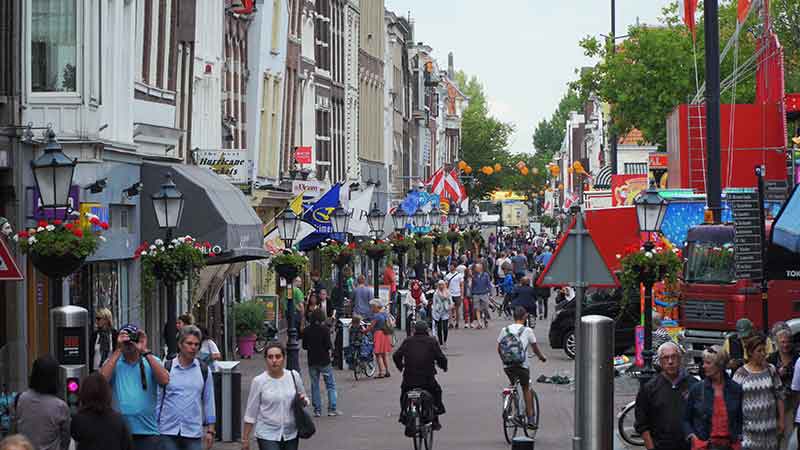
The Markt street alongside the marketplace is one of the busiest in town with lots of shops, and especially the restaurants and bars and cafés, usually buzzing with people.
Nine-minute video tour
GREAT CHURCH
One block away, the Sint-Janskerk (Saint John Church), was founded in 1485 and rebuilt after a fire in 1552. The round-arched arcades are borne by 36 pillars supporting the lofty barrel-vaulted ceiling of dark wood. It is the longest church in the Netherlands, at 123 meters. Regular concerts are performed by the famous organ.
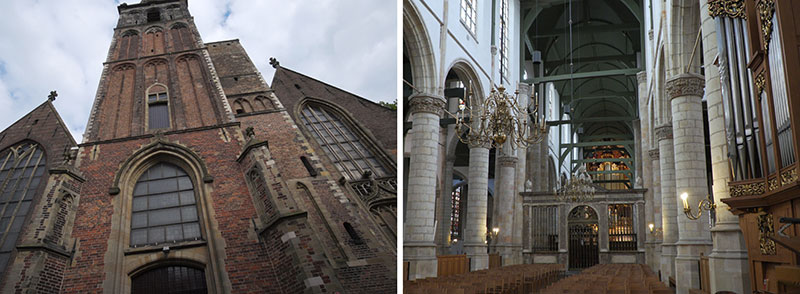
The church is named after John the Baptist, who is the patron saint of the city, a superb example of the architecture of· the later Middle Ages, famous for its 72 stained glass windows which were made between 1530 and 1603, considered the most significant stained glass collection in the Netherlands.
MUSEUMHAVEN
Now we continue along the Westhaven canal. You can easily walk along this splendid canal to the historic Museum Harbor from the town center, only 600 meters distance in about five minutes. It is worth walking down to the historic harbor where you will find clippers, barges and sailing vessels lying majestically alongside each other in the Museum Harbor, and most of these are still lived in.
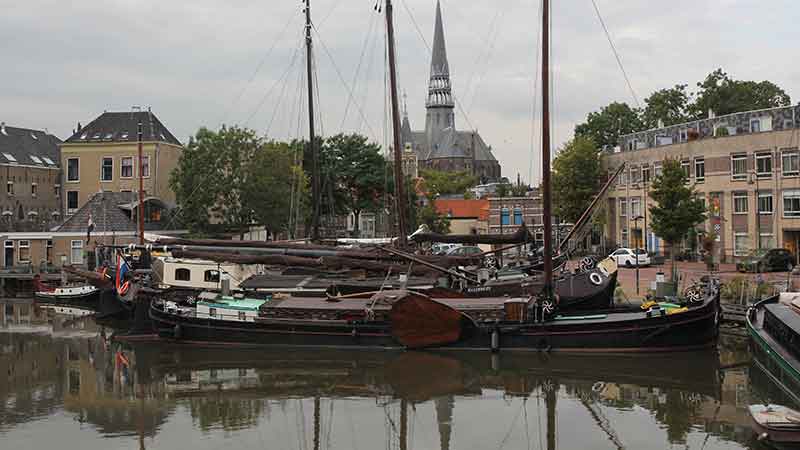
In the Middle Ages, due to its central location, the town offered passage to ships en-route to Amsterdam and Flanders. After the 15th century, Gouda's role in international shipping went into decline.
Gouda played a major role in shipping as early as the 12th century. In the Middle Ages, due to its central location, the town offered passage to ships en route to Amsterdam and Flanders. After the 15th century, Gouda's role in international shipping went into decline.
Today, you can still find historic clippers, barges, tjalken (Dutch sailing vessels with a characteristic spritsail), tugboats and straight-stem barges lying majestically alongside each other in the Museum Harbour. These are all still lived in. In the former captain's waiting room, now the Museum Harbour pub 'Museumhavencafe 't IJsselhuys', owner Herman will pour you a refreshing drink while you take in the view of the historic fleet.
Walking back towards the center from the harbor, you'll see another historic site, a windmill, very characteristic of the Netherlands.
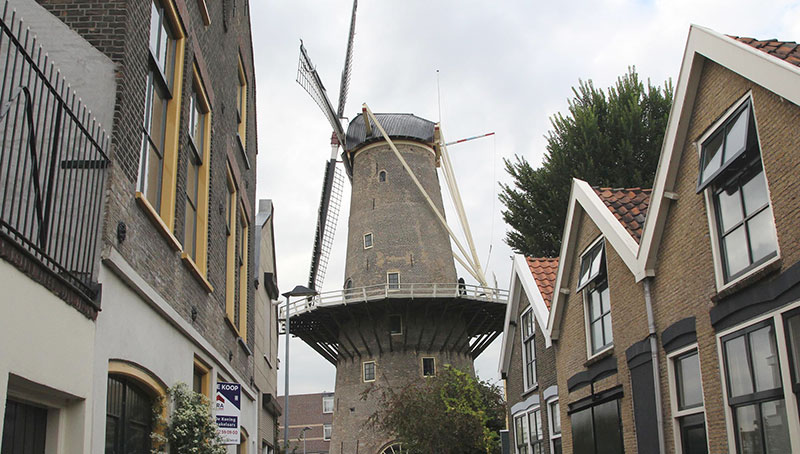
BACK LANES
We're taking a circular route through town, walking along yet another beautiful canal, observing all the bicycles going back and forth. You can actually rent a bicycle here if you'd like to peddle around in town or even extend out to some of the surrounding areas.
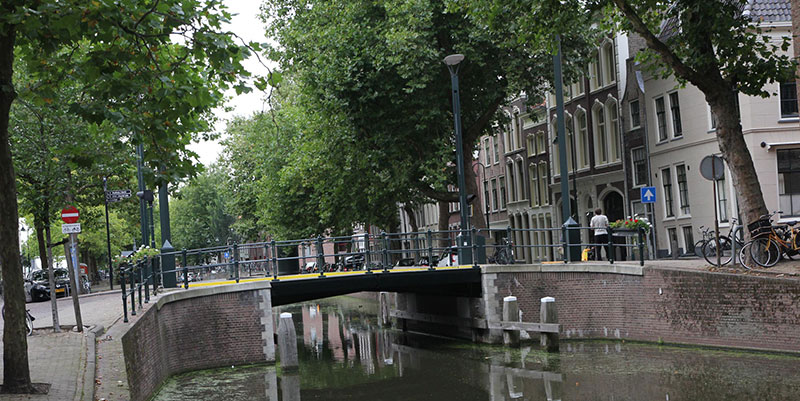
This route to the harbor gets you off the beaten track, returning along a few of the less traveled back lanes. It's an easy stroll that doesn't take much time, and this route can bring you past another few blocks of shopping. There is a benefit of being here when the cheese market is not on – you will not see very many other tourists.
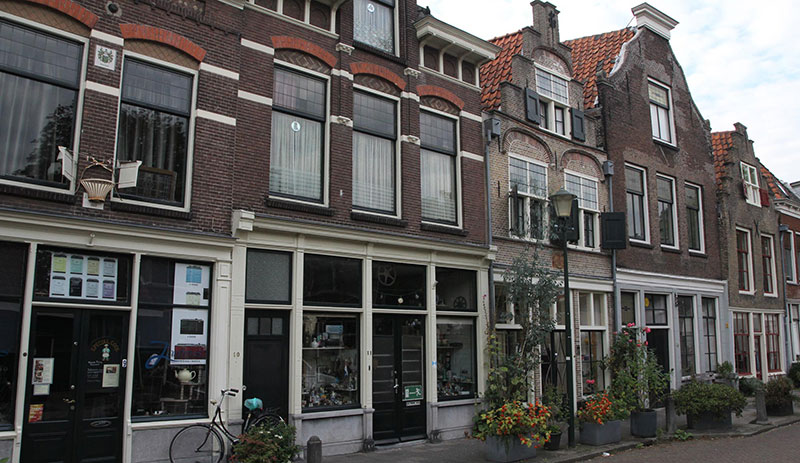
Then pass along a few residential blocks on Naalerstraat with their old-fashioned buildings, getting away from the historic highlights for a while and into a neighborhood that's more for locals. It's quiet and peaceful over here.
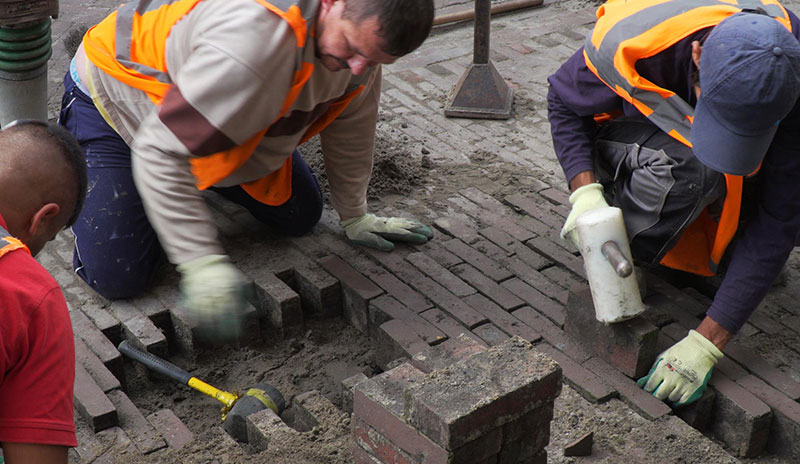
You will notice how many bricks there are in the city. The buildings and the roads are largely made of bricks. It's been said that a billion bricks have been created in the history of the city and that's largely because the land of the western Netherlands is rich in clay soil. Easy to make bricks from it, similar to cobblestone pavement found in many old European towns, but the bricks are even smoother.
TURFMARKT
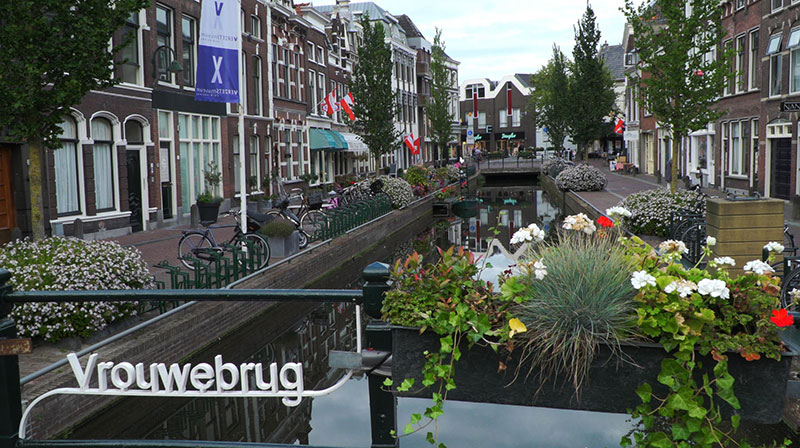
Then you will come around the bend and find what is perhaps the prettiest of the canal scenes in town along what's called the Turfmarkt. Turf was that peat, or combustible decaying soil that was very important to the old Dutch for cooking and heating their homes, much like in Ireland and elsewhere in the north of Europe.
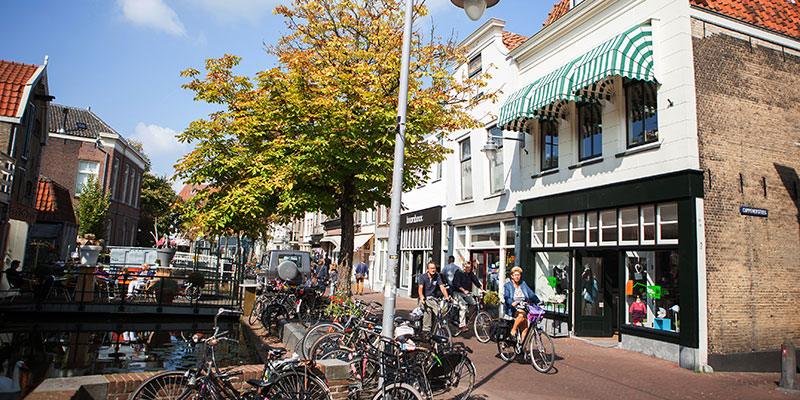
This route takes us back to the center at the marketplace. There's a lovely block behind the market square. Have a peek at it showing that very special Dutch combination of shop fronts along a pedestrian lane next to a charming little canal. Have a peek then continue another block to the New Market, a small modern shopping mall.
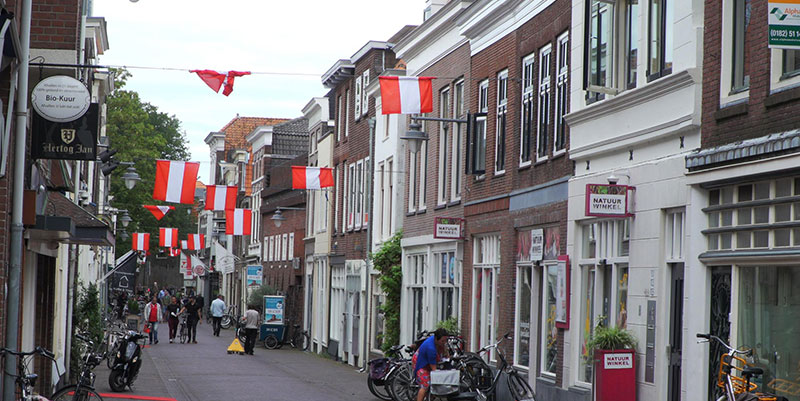
BACK TO STATION
Walk back to the train station along that main shopping street that brought you in at the beginning, Kleiweg, wrapping up our visit to the beautiful small city of Gouda. It's a pleasant walk to the train station, passing the Singel Canal around the city. It's only 800 meters from the central market square over to the train station, so you can do that in 5 or 10 minutes.
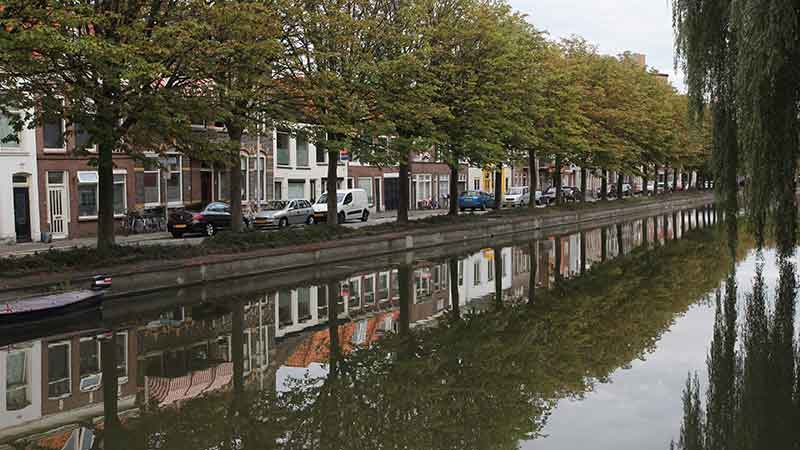
Gouda is often visited as a daytrip from other nearby cities, which are only 20 to 30 minutes away by train. Even all the way to Amsterdam is just 52 minutes. So you can easily visit Gouda for most of the day without spending the night there. Or if you wish to overnight, there are some fine hotels such as a four-star Best Western.
The superb Dutch rail system makes it very easy to travel around in this relatively small nation.
The following information was provided by the Tourist Information Office, located in the Waag on the main square. They also have an excellent website filled with helpful information to help you plan your trip.
Walking routes in Gouda
At VVV Gouda you will find interesting routes that let you discover Gouda, such as the Gouda Guides Guild's route, 'A Walk Through History'.
The Gouda Guides Guild organizes individual walking tours during the cheese market, as well as diverse themed walks throughout the year. You will get to know more about Gouda 's historic town center. Along the way, your guide will treat you to some surprising facts and good stories about famous and not-so famous residents from Gouda's past.
Explore Gouda on foot. All the most important places in Gouda's compact town centre are within walking distance. Wander through narrow picturesque streets, discover interesting museums or stroll over one of the most beautiful market squares in Europe. Walk around the Sint Janskerk and be transported back to the Middle Ages.
Discover the hidden treasures of gouda. Explore the town at your own pace. Stroll along the Goudse Waag {Gouda Weigh House) to Van Vliet Patisserie, wander via the Cincq courtyard to the Kleiweg and the Tiendeweg and back. You will be amazed by what you see.
Wander through the town and visit one of the charming courtyards, the oldest of which dates from 1449. The handsome archways and neat gardens with plants and flowers are a pleasure to behold.
Cycling In And Around Gouda
With an extensive bicycle network in what is called the Green Heart of the Netherlands , there is much to discover in and around Gouda . Just follow the numbers of the practical cycle junctions network from the Markt, starting with junction 41, to the Reeuwijkse Plassen lake area or the Krimpenerwaard. lfyou have no idea which way you want to cycle, you can obtain various bike routes from VVV Gouda. How about the Craftsmanship route, a pleasant journey.
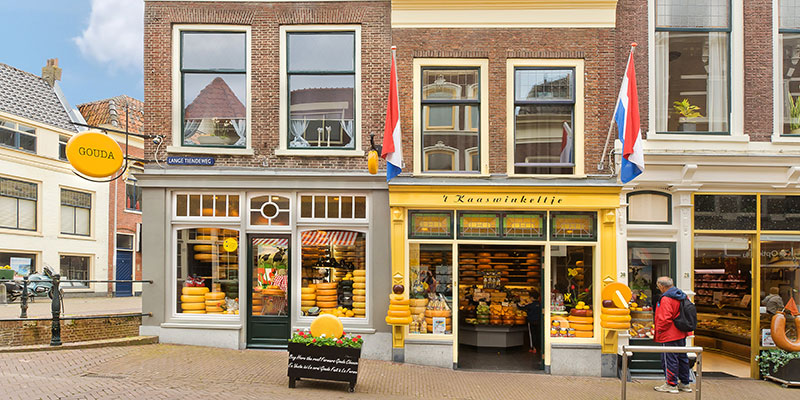
Wonderful gouda farmhouse cheese!
't Kaaswinkeltje is an authentic and unique shop in the heart of Gouda's historic town centre that has been specialised in farmhouse cheese for generations. The cheese is still made in the traditional way on the farms around Gouda. The cheese is not pasteurised, which preserves its special taste. Due to its limited production, this delicious cheese is not available for export, but is for sale in various degrees of maturity in this shop. There are always some 40 to 50 types of cheese available for you to taste, free of any obligation. All cheeses are specially vacuum packed, so you will have no problems taking your cheese home and keeping it.
Gouda Cheese Experience
The Gouda Cheese Experience is in a beautiful, yellow, monumental building in the center of Gouda. During a visit to this unique attraction, you go on an interactive journey through the world of Gouda Cheese. From its history to its production and trade, all aspects are presented in an exciting, playful manner.
Step into an enormous Gouda Cheese and experience a magnificent show. Take the Milky Way and bring an ode to the cow. Get hands on with discovery panels, virtual milking, cheese turning and the century old tradition of 'clapping hands'. And of course, taste the one and only Gouda Cheese
Biercafe De Goudse Eend
Try out over 140 types of beer at the oldest beer cafe in Gouda. At Biercafe De Goudse Eend in the Wilhelminastraat beers are available in all colours, fragrances and flavours. The Goudse Eend stands for knowledge, hospitality and quality. In the Middle Ages Gouda had the reputation of being the best beer city in the Netherlands.
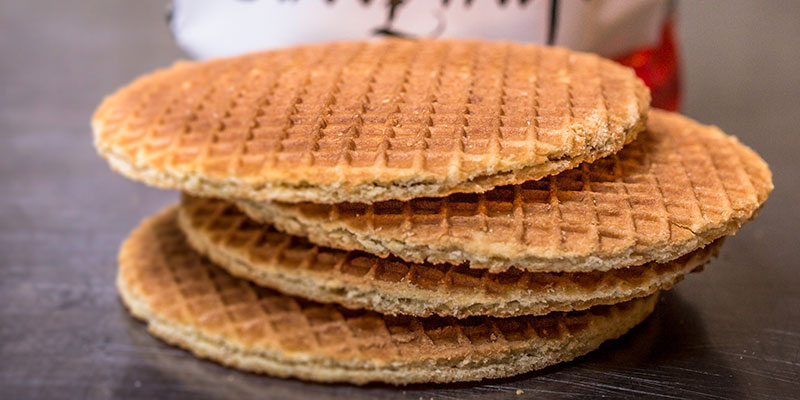
Everyone in the Netherlands is familiar with the syrup waffle, the stroopwafel, and at one time or another has sunk their teeth into one of these biscuits from Gouda. This delicious treat was invented for the poor who could not afford more expensive biscuits. The oldest recipe discovered in Gouda dates back to the 19th century. In those days the waffles were baked using dough scraps and crumbs which were then filled with syrup. The bakers of Van Vliet, Kamphuisen and Markus & Markus are happy to show you how the waffles are made. This taste of Gouda is of course not to be missed.
Gouda is an imposing, historic town. In the town center you can see much of Gouda's rich history and versatile culture, from historic buildings to museums and galleries with modern art.
Timeline of Gouda Highlights
1050 harvesting and reclamation of the peat moor east and west of Gouda takes place in the 11th century.
1139 1st mention of Gouda in a deed of the bishop of Utrecht.
1272 Count Floris V grants Gouda city rights.
1350 construction of the city canals begins.
1361 The first major city fire, during which the first Sint-Janskerk is destroyed.
1395 start of Gouda cheese market
1438 2nd city fire only five houses are spared.
1448 construction of town hall begins
1470 Gouda beer production at its peak with 200 brewers producing 15 million liters annually.
1475 Erasmus lives as a small boy in Gouda
1668 construction of de Waag designed by Pieter Post.
1673 14th plague epidemic, 20% of the population perishes.
1750 Gouda clay pipe production at its peak
1810 the 1st Gouda syrup waffle
1830 demolition of the city walls began.
1854 The last city gate was torn down
1860 Last execution on the gallows of the Town Hall.
1858 establishment of candle factory. The industrialization of Gouda begins.
1898 start of Gouda ceramics. Many pipe factories changed to making ceramics.
1940 back-filling of the city moats and canals began
1944 WWII the station is bombed
Post war, the city expands and nearly tripled in size.
In recent years there has been a shift from expanding the city towards urban renewal and gentrification.
1987 start of the cheese market for tourists.